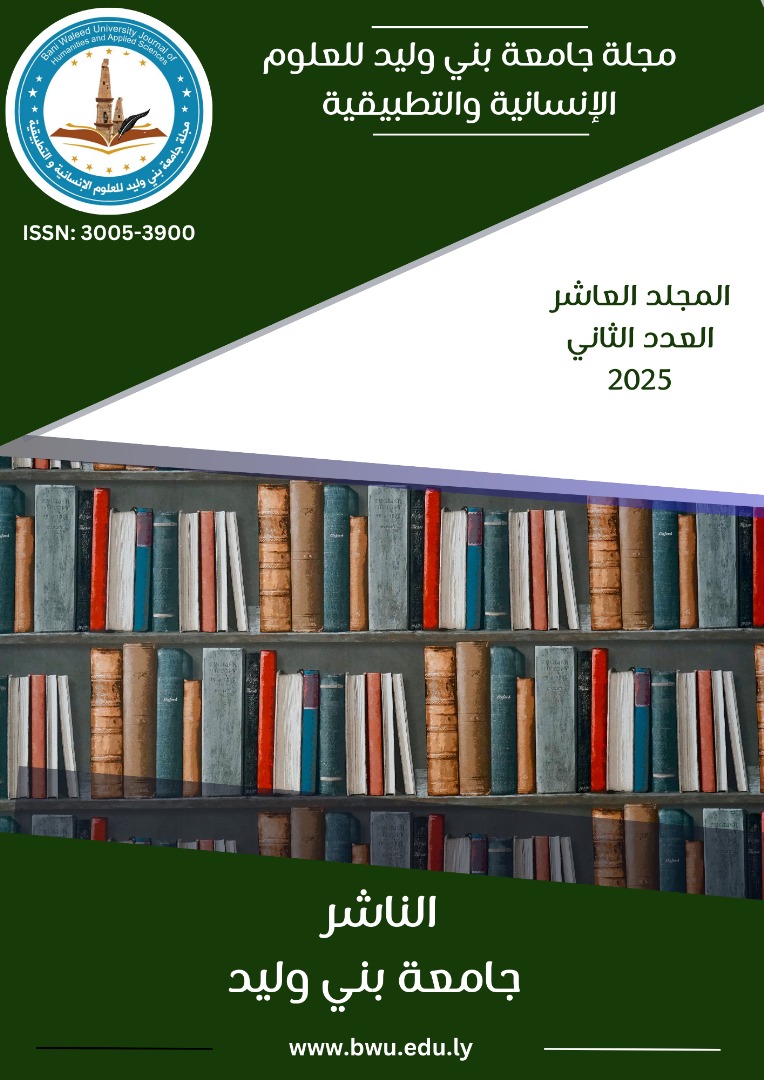استخدام التحليل العنقودي والتحليل التمييزي في تصنيف العوامل المؤثرة على التحصيل الأكاديمي لدى طلبة كلية التربية بجامعة سيئون
DOI:
https://doi.org/10.58916/jhas.v10i2.717الكلمات المفتاحية:
التحليل العنقودي، التحليل التمييزي،، التحصيل الأكاديمي، طلبة كلية التربية، جامعة سيئون.الملخص
هدفت هذه الدراسة إلى استخدام التحليل العنقودي والتحليل التمييزي للكشف عن العوامل المؤثرة على التحصيل الأكاديمي لدى طلبة كلية التربية بجامعة سيئون، اتبع الباحث المنهج الوصفي التحليلي؛ وتم الحصول على بيانات لعينة مكونة من (214) طالباً وطالبة. حيث تم استخدام بيانات الطلبة كمتنبئات وهي (الجنس، والتخصص، ومجموعة المقررات: التربوية، والنفسية، والتخصصية). وأشارت نتائج الدراسة إلى الآتي:
- وجود عنقودين لأفراد العينة العنقود الأول لمنخفضي التحصيل الأكاديمي وعددهم (76) طالب وطالبة، والعنقود الثاني لمرتفعي التحصيل الأكاديمي وعددهم (138) طالب وطالبة.
- هناك علاقة ذات دلالة إحصائية بين النوع وبين انتماء الطالب لأحد العنقودين حيث أن اغلب الإناث تمركزن في العنقود الثاني وهن من مرتفعي التحصيل، بينما أغلب الذكور تمركزوا في العنقود الأول وهم من منخفضي التحصيل الأكاديمي.
- هناك علاقة ذات دلالة إحصائية بين التخصص وبين انتماء الطالب لأحد العنقودين. إذ تمركز طلاب تخصص الرياضيات والعلوم والاجتماعيات في العنقود الأول؛ بينما تمركز طلاب الكيمياء والجغرافيا في العنقود الثاني.
- برزت مجموعة من العوامل ميزت بين مرتفعي التحصيل ومنخفضي التحصيل الأكاديمي وهي: (النوع، التخصص، وعامل المناهج التعليمية إذ كان لها الوزن الأكبر وكانت في المرتبة الأولى من حيث قدرتها على التمييز بين الطلبة مرتفعي ومنخفضي التحصيل، وفي المرتبة الثانية جاءت بعض العوامل وهي: التحليل الحقيقي (رياضيات)، الكيمياء العضوية (علوم)، تاريخ العرب الحديث (اجتماعيات)، كيمياء التحليل الآلي (كيمياء)، الجغرافيا الصناعية (جغرافيا)؛ ثم جاءت في المرتبة الثالثة عامل التربية العملية. وأن الدالة التمييزية تسهم بشكل دال إحصائياً في التمييز بين الطلبة مرتفعي ومنخفضي التحصيل الأكاديمي؛ ولقد وجدت الدراسة إن التصنيف كان صحيحاً بنسبة وصلت (96.7%).
التنزيلات
المراجع
Bouanani, Mustafa and Karima, Korat (2018). Low academic achievement in reading and mathematics from the perspective of primary school teachers, Algeria: International Journal of Specialized Education, 7(4), pp. 49-61.
Bahi, Mustafa and Al-Azhari, Mona (2010). Dictionary of Statistical Terms, Cairo: Anglo-Egyptian Library.
Joudah, Mahfouz (2008). Advanced Statistical Analysis Using SPSS, 1st ed., Jordan: Dar Wael.
Hamdan, Muhammad (2007). Dictionary of Educational Terms, 1st ed., Jordan: Dar Kunuz Al-Ma'rifa.
Khalifa, Mai (2024). Cluster Analysis of Cognitive Failure, Quality of Student-Teacher Relationships, Meaning of Life, and Academic Apathy among Secondary School Students, Ain Shams University: Psychological Counseling Center, Journal of Psychological Counseling, 78(2), pp. 312-381.
Al-Rawi, Ziad (2017). Multivariate Statistical Analysis Methods, First Edition, Jordan: Arab Institute for Training and Research in Statistics.
Al-Zaidi, Radhia (2012). Attitudes toward educational subjects and academic achievement among College of Education students from their perspectives. Yemen, University of Aden, College of Education Journal, 13, pp. 187-216.
Al-Shamrani, Mohammed (2020). Using cluster analysis and discriminant analysis techniques to classify data and construct discriminant functions. Egypt, Al-Azhar University, College of Education Journal, 186(1), pp. 11-39.
Al-Sanea, Mohammed (2009). Scientific and educational trends among the scientific departments at the College of Education, Dhamar University, and their expected impact on career choice and mastery after graduation. Taiz University, Center for Educational Rehabilitation and Development: Journal of Educational Research and Studies, 6, pp. 93-110.
Asqoul, Mohammed and Matar, Mahmoud (2019). Educational factors that distinguished high-achieving and low-achieving tenth-grade students in the results of the National Mathematics Evaluation Study 2016, Palestine: Journal of the Islamic University for Educational and Psychological Studies, 27(3), pp. 1-25.
Okasha, Mahmoud (2002). Using SPSS in Statistical Data Analysis, First Edition, Gaza: Al-Azhar University.
Al-Qamati, Yousef (2017). Advanced Statistical Analysis Using SBSS, First Edition, Libya: Research and Consulting Center, University of Benghazi.
Al-Majidil, Abdullah, and Al-Sharia, Saad (2012). Attitudes of College of Education Students Towards the Teaching Profession: A Comparative Field Study between the College of Education, Kuwait University, and the College of Education, Hasakah, Al-Furat University, as a Model. Damascus University Journal, 4(28), pp. 17-57.
Mukhaimer, Samir, and Al-Absi, Samir (2014). Attitudes of Students of the Faculty of Education at Al-Aqsa University Towards the Educational Psychology Course, Al-Quds Open University Journal for Educational and Psychological Research and Studies, 2(8), pp. 161-194.
Al-Naimi, Ezz El-Din (1440 AH). The Effectiveness of Discriminant Analysis in Predicting Academic Failure through the General Aptitude Test and the Achievement Test in Some Saudi Universities, Saudi Arabia: Journal of Educational Sciences, 2(24), pp. 463-524.
Azen, R., & Walker, M. (2011). Categorical data analysis for the behavioral and social sciences, First edition, London: Routledge, Taylor & Francis Group.
Kumar, A. (1985). Pattern of self-disclosure among orphan and non-orphan adolescents, Children Psychiatry.
Ramdeen, K. & Yim, O. (2015). Hierarchical Cluster Analysis: Comparison of Three Linkage Measures and Application to Psychological Data. The Quantitative Methods for Psychology, 11(1). https://www.researchgate.net/publication/308015073
Spencer, N. (2014). Essentials of multivariate data analysis, New York, CRC Press/Taylor & Francis Group.








